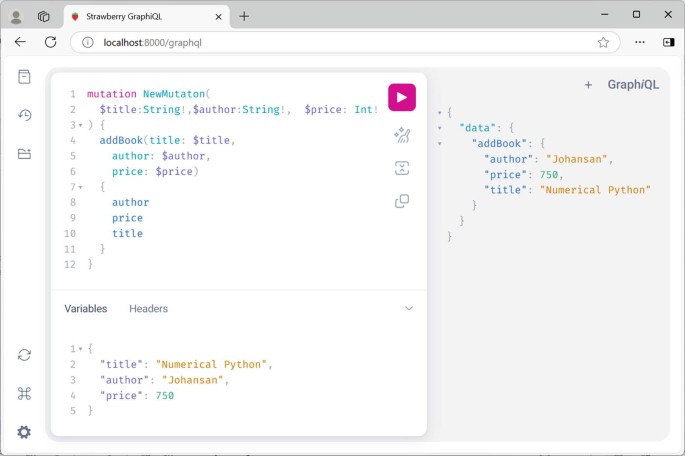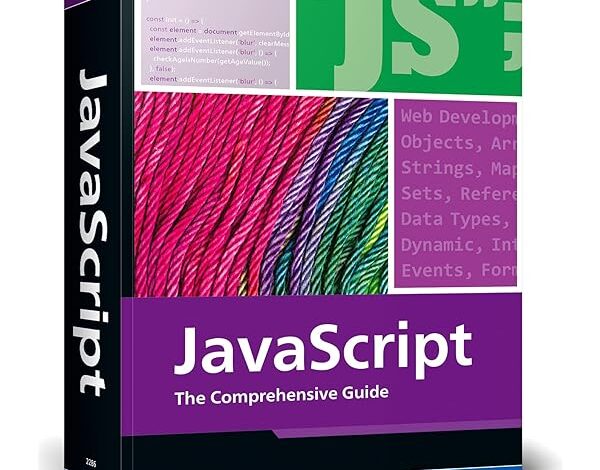
A Deep Dive into GraphQL JavaScript: From Queries to Advanced Bidirectional Pagination
The Modern Developer’s Guide to GraphQL in the JavaScript Ecosystem
In the world of modern web development, data is king, and how we fetch that data is paramount to building fast, scalable, and maintainable applications. For years, REST has been the reigning monarch of API architecture. However, a powerful contender has emerged and gained massive adoption: GraphQL. Developed and open-sourced by Facebook, GraphQL is a query language for your APIs and a server-side runtime for executing those queries with your existing data. Its rise is intrinsically linked with the evolution of Modern JavaScript and frameworks like React, Vue, and Angular.
Unlike REST, which often requires multiple round-trips to different endpoints to gather all the necessary data for a view (under-fetching) or returns far more data than needed (over-fetching), GraphQL empowers the client. With GraphQL, a client can specify exactly what data it needs in a single request, leading to more efficient network usage and a streamlined developer experience. This article will serve as a comprehensive JavaScript Tutorial on leveraging GraphQL JavaScript, covering everything from core concepts and client-side implementation to advanced techniques like bidirectional pagination and performance optimization.
Section 1: Core Concepts of GraphQL with JavaScript
Before diving into complex implementations, it’s crucial to understand the fundamental building blocks of GraphQL and how they interact with JavaScript. At its heart, GraphQL operates on a strongly-typed schema that defines the capabilities of your API.
Queries, Mutations, and the Power of the Schema
The GraphQL schema, defined using the Schema Definition Language (SDL), is the contract between the client and the server. It explicitly lists every piece of data a client can access. This interaction is primarily handled through three operation types:
- Queries: Used for reading or fetching data. This is the most common operation.
- Mutations: Used for writing or modifying data (creating, updating, deleting).
- Subscriptions: Used for maintaining a real-time connection to the server, allowing it to push data updates to the client.
You can interact with a GraphQL endpoint using a simple HTTP POST request. The body of the request contains the GraphQL operation as a JSON object. Let’s see how to perform a basic query using the native JavaScript Fetch API, a cornerstone of JavaScript Async programming.
// Using Async/Await for cleaner asynchronous code (JavaScript ES6+)
async function fetchGraphQL(query) {
const GITHUB_GRAPHQL_ENDPOINT = 'https://api.github.com/graphql';
// Note: Replace 'YOUR_PERSONAL_ACCESS_TOKEN' with a real token
const GITHUB_TOKEN = 'YOUR_PERSONAL_ACCESS_TOKEN';
try {
const response = await fetch(GITHUB_GRAPHQL_ENDPOINT, {
method: 'POST',
headers: {
'Content-Type': 'application/json',
'Authorization': `bearer ${GITHUB_TOKEN}`,
},
body: JSON.stringify({ query }),
});
if (!response.ok) {
throw new Error(`Network response was not ok: ${response.statusText}`);
}
const jsonResponse = await response.json();
console.log('Data received:', jsonResponse.data);
return jsonResponse.data;
} catch (error) {
console.error('There was a problem with the fetch operation:', error);
}
}
// Define a simple GraphQL query as a string
const GET_USER_INFO = `
query GetUserInfo {
viewer {
login
name
bio
repositories(first: 5) {
nodes {
name
description
}
}
}
}
`;
// Execute the function
fetchGraphQL(GET_USER_INFO);This example demonstrates a fundamental JavaScript API interaction. We define our query, then use an async function with await to handle the Promises JavaScript returned by `fetch`. This approach is simple but lacks features like caching, state management, and type generation, which is where dedicated client libraries shine.
Section 2: Implementing a GraphQL Client with React and Apollo
While using `fetch` is great for simple cases, real-world applications benefit immensely from a dedicated GraphQL client library. Apollo Client is the most popular choice in the React ecosystem, offering intelligent caching, UI integration, and robust state management out of the box. Other excellent options include Relay (by Facebook), urql, and TanStack Query.
Setting Up Apollo Client in a React Application

Integrating Apollo Client into a React project (a popular choice for Full Stack JavaScript with the MERN Stack) involves wrapping your application with an `ApolloProvider`. This provider uses React’s Context API to make the client instance available to any component in the tree.
First, you need to install the necessary packages:
npm install @apollo/client graphql
Next, you configure the client and provider in your application’s entry point, like `index.js` or `App.js`.
import React from 'react';
import ReactDOM from 'react-dom/client';
import {
ApolloClient,
InMemoryCache,
ApolloProvider,
gql
} from '@apollo/client';
// 1. Configure the Apollo Client
const client = new ApolloClient({
uri: 'https://flyby-router-demo.herokuapp.com/', // A public test endpoint
cache: new InMemoryCache(),
});
// 2. Define your query using the gql template literal
const GET_LOCATIONS = gql`
query GetLocations {
locations {
id
name
description
photo
}
}
`;
// 3. Create a component that uses the useQuery hook
import { useQuery } from '@apollo/client';
function LocationsDisplay() {
const { loading, error, data } = useQuery(GET_LOCATIONS);
if (loading) return <p>Loading...</p>;
if (error) return <p>Error :( {error.message}</p>;
return data.locations.map(({ id, name, description, photo }) => (
<div key={id} style={{ border: '1px solid #ccc', margin: '10px', padding: '10px' }}>
<h3>{name}</h3>
<img width="400" height="250" alt="location-photo" src={`${photo}`} />
<br />
<p><b>About this location:</b></p>
<p>{description}</p>
</div>
));
}
// 4. Wrap your app in the ApolloProvider
function App() {
return (
<ApolloProvider client={client}>
<div>
<h2>My first Apollo app 🚀</h2>
<LocationsDisplay />
</div>
</ApolloProvider>
);
}
const root = ReactDOM.createRoot(document.getElementById('root'));
root.render(<App />);In this React Tutorial snippet, the `useQuery` hook handles the entire lifecycle of the data request: it fires the query, tracks loading and error states, and updates the component with the final data. This declarative approach greatly simplifies data fetching and state management, allowing developers to focus on building the UI. This is a clear example of how JavaScript Frameworks enhance the developer experience when working with APIs.
Section 3: Advanced Techniques – Bidirectional Pagination
As applications grow, so does the data they handle. Displaying thousands of items in a single list is impractical and inefficient. This is where pagination comes in. While traditional offset-based pagination is common in REST APIs, GraphQL often favors a more robust and resilient pattern: cursor-based pagination, as defined by the Relay Cursor Connections Specification.
Understanding Cursor-Based Pagination
A “cursor” is an opaque string that points to a specific item in the dataset. Instead of asking for “page 3,” you ask for “20 items after cursor X” or “10 items before cursor Y.” This method is stateless and avoids issues with data shifting while a user is paginating. Bidirectional pagination takes this a step further, allowing users to navigate both forwards and backwards through a list, essential for features like infinite scroll feeds.
A connection-compliant query includes:
edges: A list of items, where each edge contains acursorand thenode(the actual data item).pageInfo: An object containing metadata likehasNextPage,hasPreviousPage,startCursor, andendCursor.
Implementing Bidirectional Pagination with Apollo Client’s `fetchMore`
Let’s build a React component that displays a list of GitHub repositories and allows the user to load more in either direction. The `fetchMore` function, returned by the `useQuery` hook, is key to this implementation. It allows you to execute a new query and merge the results into the original query’s cached data.

import { gql, useQuery } from '@apollo/client';
import React from 'react';
// This query is designed for bidirectional pagination
const GET_REPOSITORIES = gql`
query GetRepositories($first: Int, $after: String, $last: Int, $before: String) {
viewer {
repositories(first: $first, after: $after, last: $last, before: $before, orderBy: {field: CREATED_AT, direction: DESC}) {
edges {
cursor
node {
id
name
url
}
}
pageInfo {
endCursor
hasNextPage
startCursor
hasPreviousPage
}
}
}
}
`;
function RepositoryList() {
const { data, loading, error, fetchMore } = useQuery(GET_REPOSITORIES, {
variables: { first: 10, after: null, last: null, before: null },
});
if (loading) return <p>Loading...</p>;
if (error) return <p>Error: {error.message}</p>;
const { repositories } = data.viewer;
const { pageInfo, edges } = repositories;
// JavaScript Event handlers for buttons
const handleLoadNext = () => {
fetchMore({
variables: {
first: 10,
after: pageInfo.endCursor, // Use the cursor of the last item
last: null,
before: null,
},
});
};
const handleLoadPrevious = () => {
fetchMore({
variables: {
first: null,
after: null,
last: 10,
before: pageInfo.startCursor, // Use the cursor of the first item
},
});
};
return (
<div>
<h2>My Repositories</h2>
{pageInfo.hasPreviousPage && (
<button onClick={handleLoadPrevious}>Load Previous</button>
)}
<ul>
{edges.map(edge => (
<li key={edge.node.id}>
<a href={edge.node.url} target="_blank" rel="noopener noreferrer">
{edge.node.name}
</a>
</li>
))}
</ul>
{pageInfo.hasNextPage && (
<button onClick={handleLoadNext}>Load Next</button>
)}
</div>
);
}
// Note: This component needs to be rendered within an ApolloProvider
// with a client configured for the GitHub API.
// You also need to configure Apollo's cache with a field policy
// to correctly merge paginated results.This advanced example showcases several key Modern JavaScript concepts: JavaScript Functions (as event handlers), JavaScript Events (`onClick`), and complex state management handled elegantly by Apollo Client. To make this work seamlessly, you’d also need to configure Apollo’s `InMemoryCache` with a field policy to tell it how to merge the incoming `edges` array with the existing one, a crucial step for smooth pagination.
Section 4: Best Practices and Performance Optimization
Writing functional GraphQL JavaScript code is one thing; writing performant, secure, and maintainable code is another. Here are some essential best practices and JavaScript Tips to keep in mind.
Embrace Caching and Normalization
Apollo Client’s `InMemoryCache` automatically normalizes and caches query results. Normalization means it stores data from your queries in a flat, relational-like structure, using a unique identifier for each object (typically `id` and `__typename`). This prevents data duplication and ensures that if an object is updated by one query, any other part of your UI displaying that same object will update automatically and consistently. This is a huge boost for JavaScript Performance.
Use Persisted Queries for Production
In a production environment, sending the full GraphQL query string with every request can increase payload size and expose your schema. Persisted queries solve this. During your JavaScript Build process (using tools like Webpack or Vite), queries are extracted from your code and saved on the server. The client then sends a unique hash instead of the full query string, improving both Web Performance and JavaScript Security.

Leverage TypeScript for Type Safety
Combining GraphQL with TypeScript is a game-changer. You can use tools like GraphQL Code Generator to automatically generate TypeScript types directly from your GraphQL schema. This means your query results, variables, and even React component props can be fully type-checked, catching bugs at compile time and providing an incredible developer experience with autocompletion. This is a cornerstone of modern Clean Code JavaScript practices.
Server-Side Security
While this article focuses on the client, it’s vital to remember that a secure GraphQL API is a server-side responsibility. Implement measures like query depth limiting, complexity analysis, and proper authentication/authorization to prevent malicious or overly expensive queries from overwhelming your JavaScript Backend (e.g., a Node.js JavaScript server with Express.js).
Conclusion: The Future is Declarative
GraphQL represents a paradigm shift in client-server communication, offering a more efficient, powerful, and flexible alternative to traditional REST APIs. For JavaScript developers, the ecosystem surrounding GraphQL is mature and incredibly powerful. Libraries like Apollo Client and Relay abstract away the complexities of data fetching, caching, and state management, allowing you to build sophisticated features like real-time updates and bidirectional pagination with declarative, easy-to-understand code.
By mastering the core concepts, leveraging powerful client libraries, and adhering to performance and security best practices, you can build next-generation applications that are both a joy to develop and a delight for users. The next steps in your journey could be exploring how to build your own GraphQL server, integrating JavaScript TypeScript for end-to-end type safety, or diving into the world of JavaScript Testing with frameworks like Jest to ensure your data-driven components are robust and reliable.



